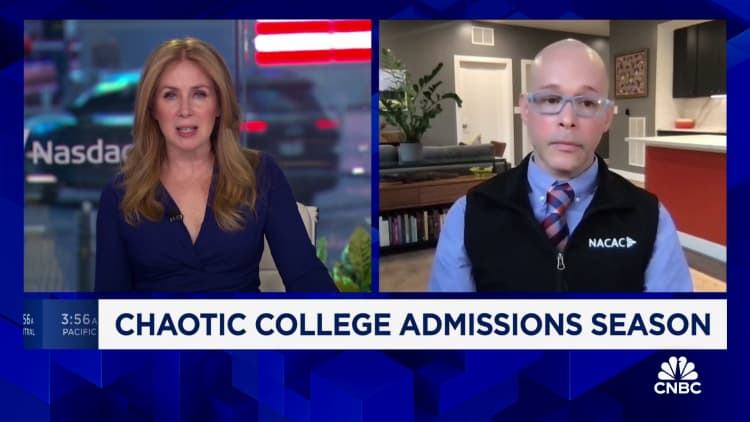Damircudic | E+ | Getty Images
The number of federal student loan borrowers with six-figure debts is on the rise.
In the second quarter of 2024, 2.4 million borrowers carried a federal student loan balance between $100,000 and $200,000, up from 1.8 million people who owed that much during the same period in 2017, according to new data by the U.S. Department of Education.
Meanwhile, 1 million people had a federal student loan balance of more than $200,000, up from 600,000 individuals.
Wayne Johnson, who served as the chief operating officer of the Office of Federal Student Aid from 2017 until 2019, tells CNBC he saw some eye-popping balances during his time at the Education Department.
“There are quite a number of people who owe the federal government over $2 million in federal student loans,” Johnson said.
More from Personal Finance:
How to find out how big your Social Security benefits may be
IRS issues final rules for inherited IRAs
How kids from rich families learn about money
In 2018, The Wall Street Journal profiled a doctor whose balance at the time topped $1 million.
The U.S. Department of Education did not immediately respond to requests for comment.
Why more borrowers have big balances
“There are several factors that have contributed to the increase in the number of borrowers carrying six figures in student loan debt,” said Betsy Mayotte, president of The Institute of Student Loan Advisors, a nonprofit that helps borrowers navigate the repayment of their debt.
The biggest one, though, is the fact that higher education has become significantly more expensive over the decades, Mayotte said.
The annual sticker price for certain schools, after factoring in tuition, fees, room and board, and other expenses, is now nearing $100,000. (With financial aid, families typically pay less.)

However, it’s graduate students who take on the largest federal student loan debts, experts say.
While undergraduate students face limits on how much they can borrow in federal student loans, graduate students do not. They can borrow as much as a program costs.
As a result of that government policy, schools don’t need to worry much about affordability as they set their prices, said Johnson, a Republican who is now running for Congress in Georgia.
“Almost every college looks at their graduate programs as their cash cows,” Johnson said.
Dentists with $300,000 student debt balances
Overall, more than 10% of graduate and professional students owe $100,000 or more in federal and private student loan debt, according to higher education expert Mark Kantrowitz. (For comparison, less than 1% of students borrow above that amount for bachelor’s degree programs.)
Graduates of dental programs owed an average of around $307,0000 in 2019-2020, Kantrowitz found, while veterinarians were about $170,000 in the red.
The large debts can be huge stressors on graduates.
Nearly 80% of those who owe between $130,000 and $139,000 report feeling a “high” or “very high” amount of stress from their debt, compared with around 25% among those with a balance under $10,000, according to data analyzed by Kantrowitz. He looked at the 2012 follow-up to the 2008 Baccalaureate and Beyond longitudinal study by the National Center for Education Statistics.
Parents saddled with student debt
In addition to graduate students, parents can also borrow unlimited amounts in Parent Plus loans, Johnson said.
Annual Parent Plus disbursements tripled between 2000 and 2016, to more than $15 billion from about $5 billion, the Century Foundation found in a 2022 report.
“Seeking to help their children find upward mobility through higher education, low-income and low-wealth parents taking out these loans risk making themselves downwardly mobile, a consequence no family should suffer in the name of college opportunity,” the foundation wrote.















